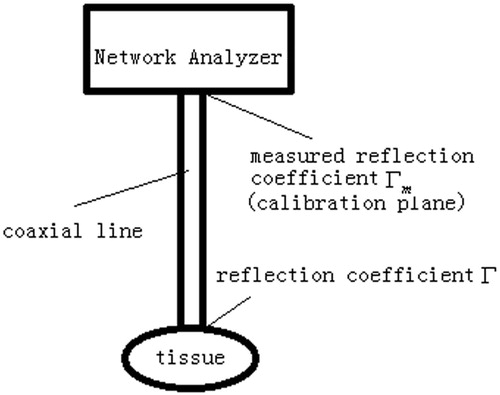Figures & data
Table I. Chronological summary of previously published temperature-dependent dielectric properties of various biological tissues.
Figure 1. Equivalent circuit of the open-ended coaxial probe method. is the equivalent capacitor corresponding to the fringing field in Teflon,
is the capacitance accounting for the fringing field in air, and
is the complex relative permittivity.
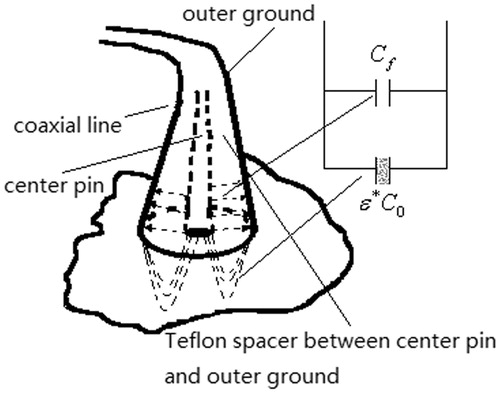
Figure 3. Diagram of the measurement system. 1, coaxial line; 2, digital micro-thermometer (used to measure tissue temperature); 3, water bath incubator (used to control water temperature); 4, heater (used to heat water); 5, salver (used to place the tissues); 6, magnet (used to fix the tissues); 7, preservative film (used to pack the tissues); 8, thermometer probe; 9, water.
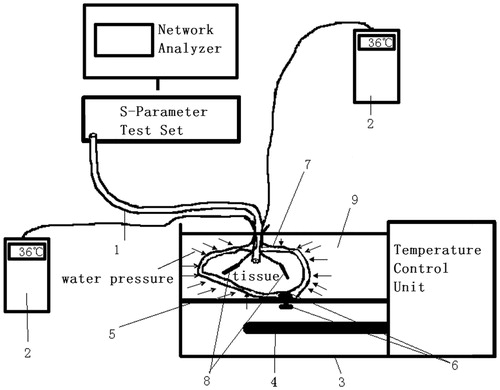
Figure 4. Smith chart of (A) an open-circuit termination and (B) a short-circuit termination. The reflection coefficients in (B) can be obtained by rotating at an angle of 180° of the reflection coefficients in (A) around the centre point.
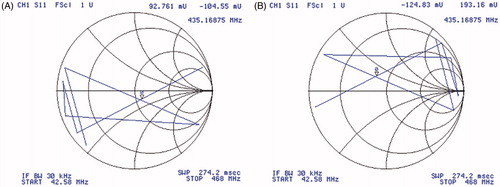
Figure 5. Temperature-dependent dielectric properties of porcine tissues at 43 MHz, with mean values and uncertainty margins of the dielectric constant and electric conductivity.
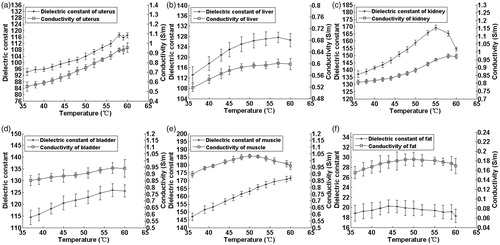
Figure 6. Temperature-dependent dielectric properties of porcine tissues at 64 MHz, with mean values and uncertainty margins of the dielectric constant and electric conductivity.
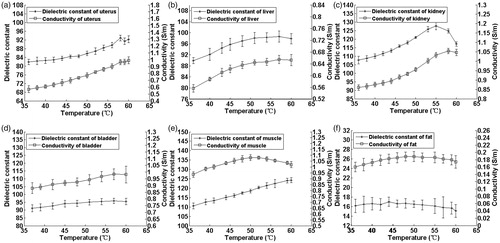
Figure 7. Temperature-dependent dielectric properties of porcine tissues at 128 MHz, with mean values and uncertainty margins of the dielectric constant and electric conductivity.
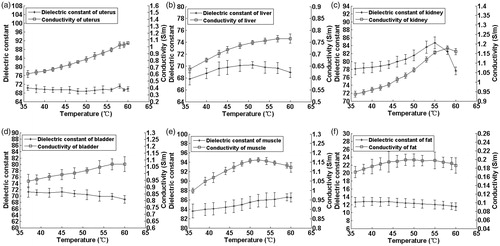
Figure 8. Temperature-dependent dielectric properties of porcine tissues at 170 MHz, with mean values and uncertainty margins of the dielectric constant and electric conductivity.

Figure 9. Temperature-dependent dielectric properties of porcine tissues at 298 MHz, with mean values and uncertainty margins of the dielectric constant and electric conductivity.
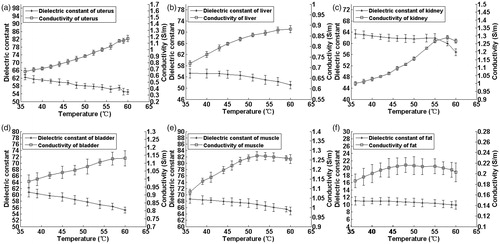
Figure 10. Temperature-dependent dielectric properties of porcine tissues at 400 MHz, with mean values and uncertainty margins of the dielectric constant and electric conductivity.
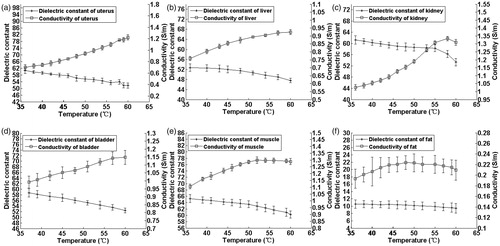
Figure 11. Temperature-dependent dielectric properties of porcine tissues at 468 MHz, with mean values and uncertainty margins of the dielectric constant and electric conductivity.
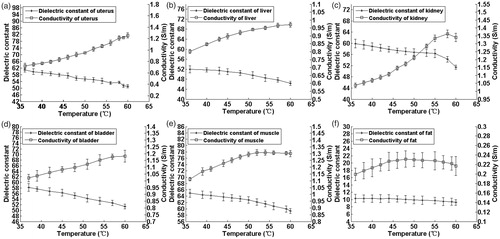
Table II. Maxima of standard uncertainties of the dielectric constant and conductivity of the tissues in this study.
Table III. Range of variation (N = 3) of the dielectric properties at 45 °C, at different discrete frequencies. Mean values of dielectric properties of different tissues at different frequencies can be obtained from .
Table IV. Comparison of the comparable dielectric constants of the biological tissues between this study and previous studies [Citation6,Citation32].

